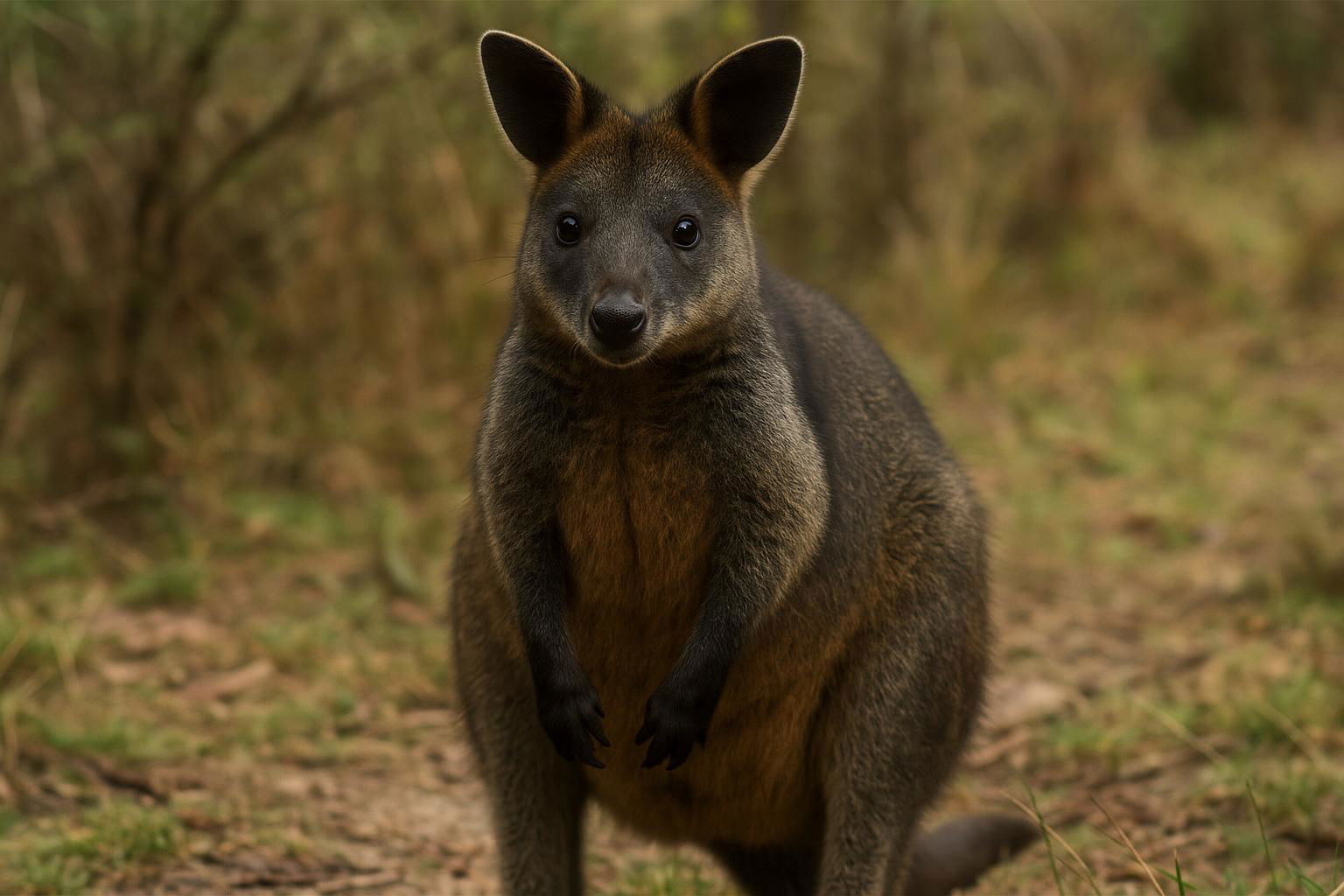
Swamp Wallaby
Wallabia bicolor
The Swamp Wallaby (Wallabia bicolor) is a distinctive marsupial native to eastern Australia, ranging from northeastern Queensland to southeastern South Australia and even Tasmania. Known for its adaptability to a variety of habitats, this species thrives in dense, forested areas, wetland regions, and heathland environments. Physically, the Swamp Wallaby can be identified by its slender, agile build, and striking coloration: a dark brown to blackish upper body with a lighter underbelly and often a noticeable reddish-brown patch on the neck and shoulders. Its tail is long and thick, assisting in balance and agile movement, while its ears are small but sensitive, aiding in detecting predators.
Typically solitary and crepuscular, the Swamp Wallaby is most active during dusk and dawn when it forages for food. This herbivore maintains a diverse diet, primarily consuming a variety of leaves, shrubs, and grasses, and is known to adapt its eating habits depending on the season. Unlike other wallabies, the Swamp Wallaby has a unique gait, moving its front and back legs almost simultaneously, a trait that helps it move stealthily through its dense habitats. Reproductively, the species practices embryonic diapause, allowing them to delay development of the embryo until environmental conditions are favorable. Though adaptable, Swamp Wallabies face challenges from habitat destruction and fragmentation, making conservation efforts vital for their continued survival.

 All Species & Breeds
All Species & Breeds
 Highland Cattle
Highland Cattle
 Miniature Donkeys
Miniature Donkeys
 All Species Directory
All Species Directory
 Highland Cattle in Virginia
Highland Cattle in Virginia
 Miniature Donkeys in Texas
Miniature Donkeys in Texas












